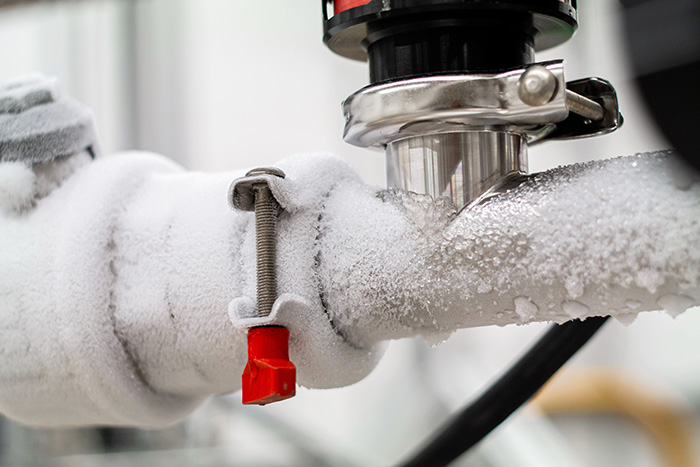What're your ideas on Helpful Tips to Prevent Frozen Pipes this Winter?

Cold weather can wreak havoc on your pipes, specifically by freezing pipes. Below's just how to avoid it from happening and what to do if it does.
Intro
As temperature levels decline, the risk of frozen pipelines rises, potentially bring about costly fixings and water damages. Recognizing exactly how to stop frozen pipes is crucial for property owners in cold environments.
Understanding Icy Pipes
What triggers pipelines to freeze?
Pipelines freeze when subjected to temperature levels listed below 32 ° F (0 ° C) for prolonged durations. As water inside the pipelines freezes, it increases, putting pressure on the pipeline wall surfaces and potentially causing them to break.
Risks and problems
Frozen pipes can lead to water supply interruptions, residential property damages, and expensive fixings. Burst pipelines can flooding homes and create substantial architectural damages.
Signs of Frozen Pipeline
Determining icy pipes early can stop them from rupturing.
Just how to identify icy pipes
Try to find decreased water circulation from taps, uncommon smells or noises from pipes, and visible frost on exposed pipelines.
Avoidance Tips
Shielding prone pipelines
Cover pipelines in insulation sleeves or make use of warm tape to safeguard them from freezing temperatures. Focus on pipes in unheated or external areas of the home.
Home heating techniques
Maintain interior areas properly heated, particularly areas with pipes. Open up cupboard doors to enable cozy air to distribute around pipes under sinks.
Securing Exterior Pipes
Garden tubes and exterior taps
Detach and drain pipes garden hoses before winter months. Set up frost-proof faucets or cover outside faucets with shielded caps.
What to Do If Your Pipelines Freeze
Immediate activities to take
If you believe frozen pipes, keep faucets available to eliminate pressure as the ice melts. Utilize a hairdryer or towels taken in hot water to thaw pipelines gradually.
Long-Term Solutions
Architectural adjustments
Think about rerouting pipes away from exterior walls or unheated areas. Include additional insulation to attic rooms, basements, and crawl spaces.
Updating insulation
Invest in high-quality insulation for pipelines, attic rooms, and wall surfaces. Proper insulation aids preserve constant temperature levels and decreases the threat of frozen pipelines.
Verdict
Avoiding frozen pipelines needs proactive steps and fast actions. By recognizing the causes, signs, and preventive measures, house owners can protect their pipes throughout winter.
5 Ways to Prevent Frozen Pipes
Drain Outdoor Faucets and Disconnect Hoses
First, close the shut-off valve that controls the flow of water in the pipe to your outdoor faucet. Then, head outside to disconnect and drain your hose and open the outdoor faucet to allow the water to completely drain out of the line. Turn off the faucet when done. Finally, head back to the shut-off valve and drain the remaining water inside the pipe into a bucket or container. Additionally, if you have a home irrigation system, you should consider hiring an expert to clear the system of water each year.
Insulate Pipes
One of the best and most cost-effective methods for preventing frozen water pipes is to wrap your pipes with insulation. This is especially important for areas in your home that aren’t exposed to heat, such as an attic. We suggest using foam sleeves, which can typically be found at your local hardware store.
Keep Heat Running at 65
Your pipes are located inside your walls, and the temperature there is much colder than the rest of the house. To prevent your pipes from freezing, The Insurance Information Institute suggests that you keep your home heated to at least 65 degrees, even when traveling. You may want to invest in smart devices that can keep an eye on the temperature in your home while you’re away.
Leave Water Dripping
Moving water — even a small trickle — can prevent ice from forming inside your pipes. When freezing temps are imminent, start a drip of water from all faucets that serve exposed pipes. Leaving a few faucets running will also help relieve pressure inside the pipes and help prevent a rupture if the water inside freezes.
Open Cupboard Doors
Warm your kitchen and bathroom pipes by opening cupboards and vanities. You should also leave your interior doors ajar to help warm air circulate evenly throughout your home.

Do you really like reading up on Preventing and dealing with frozen pipes? Try leaving a short review further down. We'd be pleased to see your reactions about this blog post. In hopes that you come back again before long. Remember to take the opportunity to promote this article if you enjoyed it. Kudos for your time. Don't forget to pay a visit to our site back soon.
Get Started